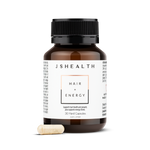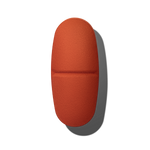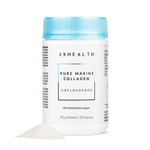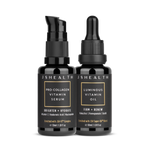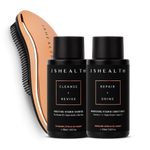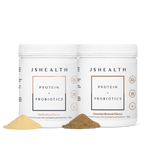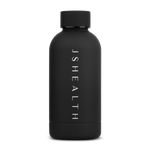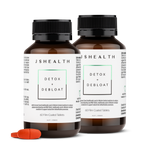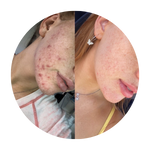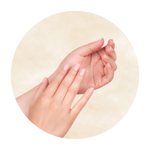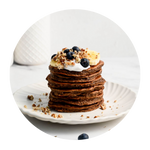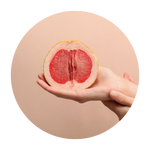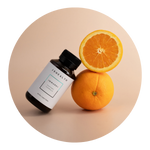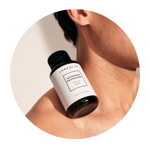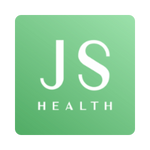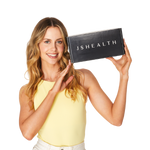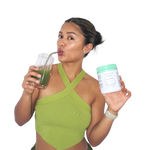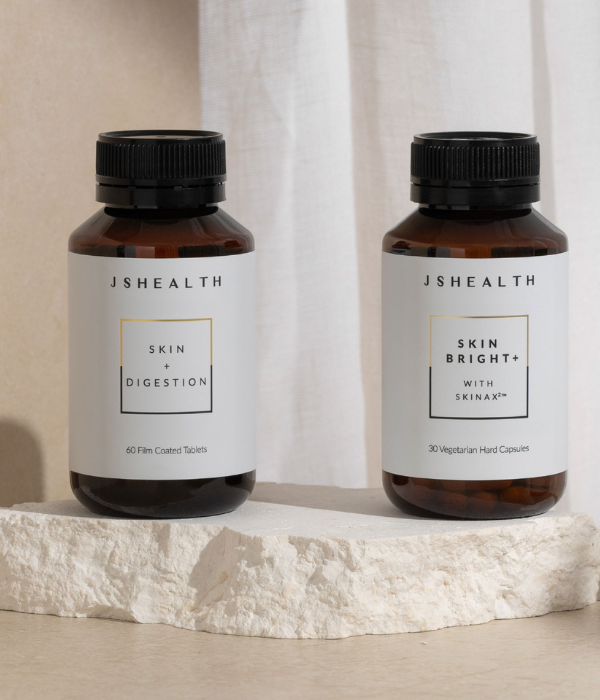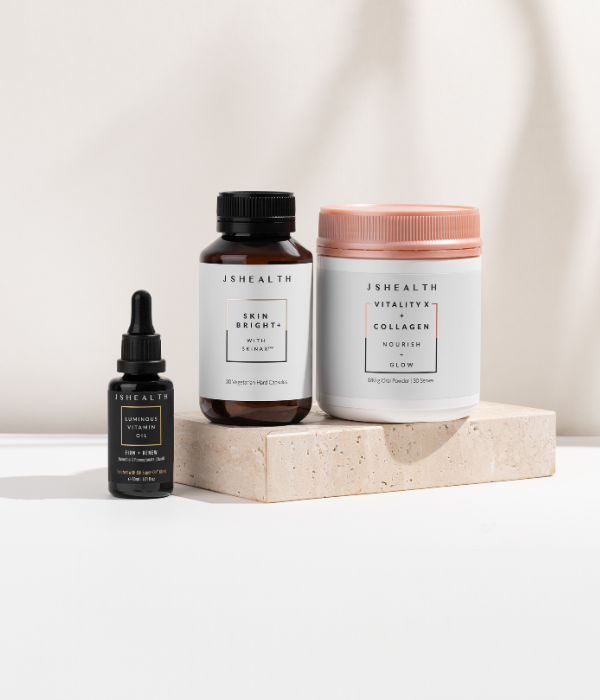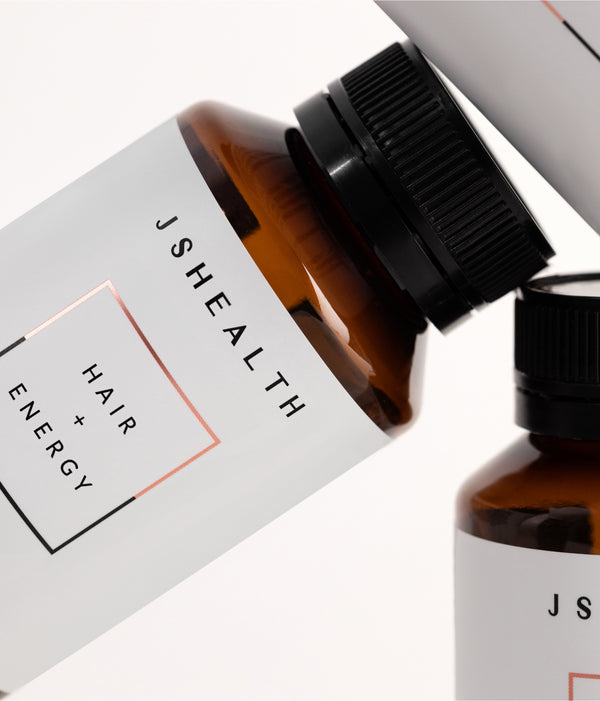Eating in sync with your cycle
Your period is an incredibly orchestrated flow of hormonal shifts, with each phase offering unique needs and opportunities for nourishment. Aligning your plate with the rhythm of your monthly cycle can be a powerful tool for hormonal balance and overall wellbeing.
From embracing iron-rich foods during menstruation to harnessing the power of pumpkin seeds in the follicular phase, read on to find out how your plate can become a wonderful palette of cycle-supportive foods.
Nutrition for Every Phase
Menstruation (Day 0-7)
During menstruation when energy levels are lowest, comfort is key. Replenish lost iron and mineral stores with grass-fed red meats, liver, turkey and deep purple produce such as beets1. Foods rich in B vitamins, which work to support energy, are wonderful during this inner ‘winter’ season as the body prepares for new growth. Think black tahini, eggs, mushrooms and dark chocolate. Vitamin-C rich foods such as grapefruit, oranges, kiwi fruit and red capsicum promote iron nutrient absorption. Opt for warm cooked meals such as soups or stews over cold meals, and steer away from stimulants (such as coffee or alcohol) and refined sugars.
Follicular Phase (Day 8 - 13)
The ‘spring’ phase of your cycle calls for nutrient-dense foods to help balance oestrogen production as it begins to amp up2. Foods such as pumpkin and flax seeds as well as pomegranates and sprouted beans help to build oestrogen. Colourful, inflammation-reducing foods such as citrus, grapes and berries as well as sulphur-rich vegetables (broccoli, cauliflower and bok choy) help to combat against free radicals and support cellular health2. As the body gears up for follicle maturation and rebuilds the uterine lining, load up on healthy fats and proteins to support the body’s building blocks. Reach for avocado, coconut oil and grass-fed ghee or butter to help regulate leptin levels in the body crucial for metabolic balance and satiety.
Ovulation (Day 14-17)
During ovulation, the egg is released from the ovary as oestrogen and testosterone reaches its peak, in turn increasing libido levels3. It’s helpful to eat foods that support liver detoxification and oestrogen clearance, such as brussels sprouts, kale, cabbage, turnips and broccoli. Light but wholesome foods such as quinoa, brown rice and cold-water fish also help to support the appetite during the ‘summer’ period of the cycle, as hormones shift from ‘feeding and foraging’ mode to an increase in sexual desire3. Eat several small meals throughout the day to help maintain stable blood sugar and fluid levels.
Luteal Phase (Day 17-28)
Lasting about 10-14 days, the ‘fall’ or ‘autumn’ season of the cycle signals the stimulation of progesterone production. Eat foods high in zinc and magnesium to stimulate the healthy growth of the uterine lining, such as oysters, nuts, seeds, beans, as well as foods high in vitamin B6 like salmon, bananas and walnuts. Foods rich in protein, fats and slow release low GI carbohydrates like sweet potatoes and legumes are crucial to support blood sugar balance and avoid the energy slumps4! These dips have been shown to lead to emotional PMS symptoms such as moodiness and anxiety4. As water retention increases, which can cause bloating and puffiness, ensure adequate water intake and consume hydrating fruits and vegetables like cucumbers, watermelon and celery.
Perimenopause
The gentle transition into menopause calls for a focus on healthy fats, proteins and organic fresh produce to support comfort and the gut microbiome5. A diet rich in whole grains, lean protein, fruits, vegetables and fermented foods such as kimchi and sauerkraut provide vital nutrients to support hormone health and ease common perimenopausal symptoms such as hot flashes and mood swings5. It’s especially important to keep inflammation low during this period – avoid processed foods, alcohol, refined sugars and carbs. Regular consumption of calcium-rich foods like dairy products, green leafy vegetables, and fortified cereals is also recommended to maintain bone health.
Amenorrhea
Amenorrhea, the absence of menstruation, can be a signal from your body about an imbalance or stress. When your period seems to have gone missing, it's more important than ever to support your body with nutrient-dense foods during this time6. Protein is key as it plays a key role in hormone production and regulation. Opt for lean proteins like chicken, fish and legumes into your diet. Iron-rich foods are also recommended, as amenorrhea has been shown to have the potential to lead to anaemia7. Calcium and Vitamin D are important for bone health, especially when menstruation is absent, potentially affecting bone density. Dairy products, fortified plant milks and leafy greens are wonderful sources of calcium, while Vitamin D can be sourced from sunlight and foods like fatty fish and egg yolks. Healthy fats, such as avocados, nuts and seeds are beneficial for hormone production and can aid in returning to a regular menstrual cycle8. Remember, it's important to consult with a healthcare provider if you're experiencing amenorrhea to understand and address its underlying causes.
Remember: Everyone experiences their cycle in unique ways. Listen to your body, experiment with different approaches and find what aligns best with you!
References/footnotes:
- Martini, M.C., Lampe, J.W., Slavin, J.L. and Kurzer, M.S. (1994). Effect of the menstrual cycle on energy and nutrient intake. The American Journal of Clinical Nutrition, [online] 60(6), pp.895–899. doi:https://doi.org/10.1093/ajcn/60.6.895.
- Rogan, M.M. and Black, K.E. (2022). Dietary energy intake across the menstrual cycle: a narrative review. Nutrition Reviews. doi:https://doi.org/10.1093/nutrit/nuac094.
- Chaves, D.E. (2015). Changes in Taste and Food Intake during the Menstrual Cycle. Journal of Nutrition & Food Sciences, 05(04). doi:https://doi.org/10.4172/2155-9600.1000383.
- Cross, G.B., Marley, J., Miles, H. and Willson, K. (2001). Changes in nutrient intake during the menstrual cycle of overweight women with premenstrual syndrome. British Journal of Nutrition, 85(4), pp.475–482. doi:https://doi.org/10.1079/bjn2000283.
- Erdélyi, A., Pálfi, E., Tűű, L., Nas, K., Szűcs, Z., Török, M., Jakab, A. and Várbíró, S. (2024). The Importance of Nutrition in Menopause and Perimenopause—A Review. Nutrients, [online] 16(1), p.27. doi:https://doi.org/10.3390/nu16010027.
- WARREN, M.P. (1980). The Effects of Exercise on Pubertal Progression and Reproductive Function in Girls*. The Journal of Clinical Endocrinology & Metabolism, 51(5), pp.1150–1157. doi:https://doi.org/10.1210/jcem-51-5-1150.
- Kwan, Y.H., Woong, N.L., Foo, R.C.M. and Balakrishnan, T. (2021). COVID-19 lockdown measures induced severe iron-deficiency anaemia resulting in central retinal vein occlusion and amenorrhea. BMJ Case Reports, [online] 14(8), p.e242639. doi:https://doi.org/10.1136/bcr-2021-242639.
- Childs, C., Calder, P. and Miles, E. (2019). Diet and Immune Function. Nutrients, [online] 11(8), p.1933. doi:https://doi.org/10.3390/nu11081933.
